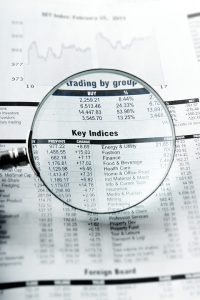The Australian bond market plays a crucial role in the country’s financial ecosystem, providing investors with opportunities to diversify their portfolios and earn fixed income through various investment vehicles. Bonds are essentially debt securities issued by governments, corporations, or municipal entities to raise capital, with investors lending money for a fixed period in exchange for regular interest payments and the return of their principal at maturity. In Australia, the bond market is well-developed and offers a wide range of options for investors looking to allocate funds in fixed-income securities.
Overview of the Australian bond market
The Australian bond market is divided into two main segments: the government bond market and the corporate bond market. Government bonds are issued by the Australian government to fund its operations and infrastructure projects, with the most prominent issuers being the Commonwealth Government through the Australian Office of Financial Management (AOFM) and various state governments. These bonds are considered relatively safe investments, as they are backed by the full faith and credit of the government, making them less risky compared to other fixed-income securities.
On the other hand, the corporate bond market consists of debt securities issued by companies to raise funds for expansion, acquisitions, or refinance existing debt. Corporate bonds offer higher yields than government bonds to compensate investors for the added risk of default by the issuing company. The Australian Securities Exchange (ASX) plays a significant role in facilitating the trading of corporate bonds, providing a platform for investors to access a wide range of issuers and maturities.
Key market trends and investment opportunities
In recent years, the Australian bond market has witnessed several trends that have shaped the investment landscape for fixed-income securities. One notable trend is the increasing demand for sustainable and socially responsible investments, with investors looking to support companies that align with their values and contribute positively to society and the environment. This has led to the growth of green bonds, which are issued to finance renewable energy projects, green buildings, and other environmentally-friendly initiatives.
Another trend in the Australian bond market is the rise of hybrid securities, which combine features of both equity and debt instruments. These hybrid securities offer investors a higher yield than traditional bonds while providing some equity-like features, such as the possibility of converting into shares or receiving discretionary distributions. Hybrid securities are issued by financial institutions, utilities, and other companies looking to optimize their capital structure and diversify their funding sources.
Types of bonds in Australia and performance metrics
In Australia, investors can choose from a variety of bonds, including government bonds, corporate bonds, municipal bonds, and hybrid securities. Government bonds are considered risk-free investments, as they are backed by the full faith and credit of the government, making them less volatile than other fixed-income securities. Corporate bonds offer higher yields but carry credit risk, as the issuing company may default on its payment obligations. Municipal bonds are issued by local governments to finance public infrastructure projects, such as schools, hospitals, and transportation systems.
When evaluating the performance of bonds, investors consider several metrics to assess their risk and return characteristics. One key metric is the bond yield, which represents the annualized return on investment expressed as a percentage of the bond’s face value. Yield-to-maturity (YTM) is another crucial metric that calculates the total return an investor can expect to receive if the bond is held until maturity, taking into account coupon payments and the bond price. Duration measures the sensitivity of a bond’s price to changes in interest rates, with longer-duration bonds being more vulnerable to interest rate fluctuations.
Market analysis and strategies for investing in the Australian bond market
Investing in the Australian bond market requires a thorough understanding of market dynamics, interest rate movements, and credit risk factors that can impact bond prices and yields. Market analysis involves assessing economic indicators, central bank policies, and geopolitical events that may influence the performance of fixed-income securities. Bond yields tend to move in correlation with interest rates, with falling rates boosting bond prices and rising rates leading to lower bond values.
To build a diversified bond portfolio, investors can consider a mix of government, corporate, and municipal bonds with different maturities, credit ratings, and sectors to reduce risk and enhance returns. Treasury bonds are often used as risk-free assets to anchor a portfolio, while corporate bonds offer higher yields and credit spreads to generate income. Municipal bonds provide tax-exempt interest income for investors in higher tax brackets, making them attractive for income-seeking investors.
In conclusion, the Australian bond market offers a range of investment opportunities for investors seeking fixed income and capital preservation in a diversified portfolio. By understanding the various types of bonds available, analyzing market trends and performance metrics, and implementing sound investment strategies, investors can navigate the bond market successfully and achieve their financial goals. Bond markets provide an essential avenue for capital formation, lending, and investment in the Australian economy, contributing to the overall stability and growth of the financial sector.








